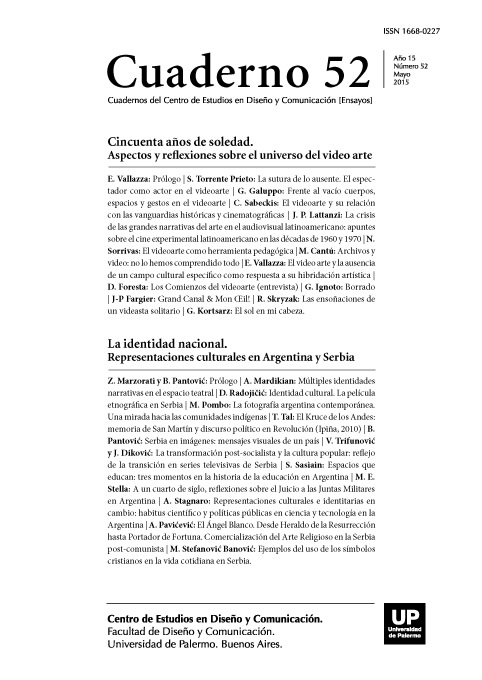El videoarte como herramienta pedagógica
Abstract
Drawing a parallel with the postulates of Lev Vygotsky, considered a precursor
of social constructivism, this article proposes to investigate the history and evolution of
video art as an educational tool that allows students to create a visual art work in response
to a given problem situation.
Since its inception in the ´60s, video art was conceived as a form of critical artistic expression of political and cultural society. The avant-garde video artists seized the tool for
getting a visual discourse from which they could have their own voice. Then, as a form of
expression, video art students will allow a critical reading of his own reality and communicate a point of view on it, explaining the visual form of knowledge construction process.
In addition, considering the audiovisual as an universal discourse, the research will seek to
ascertain whether video art can function as a bridge to reconnect the two generations divided by the turn of the millennium and the digital age: digital natives and digital immigrants.
Finally, the aim of this work is to investigate in the history of video art the discursive
production of videographers, especially the work of Nam June Paik and the Fluxus group
to construct, from this analysis, an ideal educational tool, investigating the use of new
technologies in education, especially those concerning the design of multimedia and audiovisual speech.
References
Kerckhove De, D. (1999). Inteligencias en conexión. Hacia una sociedad de la web. Barcelona: Gedisa.
Mancini, P. (2006). Nam June Paik, el padre del videoarte. Buenos Aires: educ.ar. Recuperado de http://portal.educ.ar/debates/protagonistas/arte-cultura/nam-june-paik-el-padredel-videoarte.php
Martínez Gueyraud, A. (2010). El videoarte como nuevo agente didáctico del diseño contemporáneo o los adiestramientos de transposición entre irrealidades y realidades. En Actas de Diseño Nº 8. IV Encuentro Latinoamericano de Diseño. Buenos Aires: Centro de Estudios en Diseño y Comunicación. Universidad de Palermo.
Perez Ornia, J. R. (1996). El videoarte de vanguardia. En La Ferla, J. (comp.). La revolución del video. Buenos Aires: Libros del Rojas.
Prensky, M. (2010). Nativos e Inmigrantes Digitales. Madrid: Institución Educativa SEK. Recuperado de http://www.marcprensky.com/writing/Prensky-NATIVOS%20E%20INMIGRANTES%20DIGITALES%20(SEK).pdf
Read, H. (1982). Educación por el arte. Barcelona: Ediciones Paidós Ibérica.
Vigotsky, L. S. (1982). La imaginación y el arte en la infancia. Buenos Aires: Akal.
Los autores/as que publiquen en esta revista ceden los derechos de autor y de publicación a "Cuadernos del Centro de Estudios de Diseño y Comunicación", Aceptando el registro de su trabajo bajo una licencia de atribución de Creative Commons, que permite a terceros utilizar lo publicado siempre que de el crédito pertinente a los autores y a esta revista.


